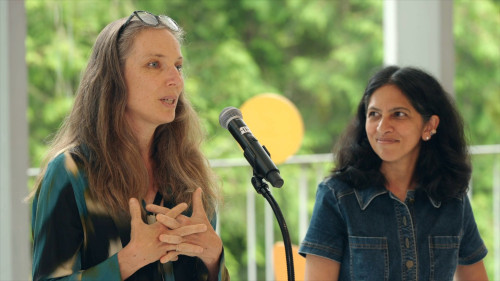Over the seven years I played Division I football, I was constantly told by coaches and trainers: “Baffour, it’s terrifying how inflexible you are.” Despite meeting all performance metrics, I couldn’t reach my full athletic potential due to my lack of stretching. Consider how artists come from every corner of the world while mainstream engineering has remained homogeneous for centuries. Artists can paint the same scene in many ways, while engineers’ designs converge toward the same point. We engineers aren’t stretching; integrating the arts into our work forces us out of our comfort zones and encourages us to push the boundaries of our mediums with creative and innovative approaches. One day, we may even create and perform on a stage or in a lab in addition to our usual studio. Now that’s stretching!
Baffour Osei is an engineer who emphasizes a multidisciplinary, collaborative approach to robotics research and STEAM education. His work aims to create inclusive environments that support personalized learning through discovery and facilitate the exploration of diverse perspectives, which he believes is crucial for fostering innovation.
As a consultant and educator, Baffour works with schools and organizations to expand and enhance engineering programs. He is the head of learning and development at The MakersPlace, serving about 800 students across Accra, Ghana. One of his notable achievements was creating new engineering programs for two Ghanaian schools, complete with makerspaces and a hands-on, project-based curriculum. Additionally, he serves on the board of TechLit Africa, a nonprofit organization that upcycles computers to build computer labs for schools in rural Kenya.
Baffour is the manager of the Robotics Lab at Princeton University’s School of Engineering and Applied Science. This cutting-edge facility spans two stories and features an aerial drone-flying space, a mobile robot area with motion tracking, a prototyping area, and advanced manufacturing capabilities, including polyjet 3D printing and waterjet cutting. The lab also provides workspaces for faculty and graduate students, fostering a collaborative environment that encourages experimentation and interdisciplinary cooperation.
